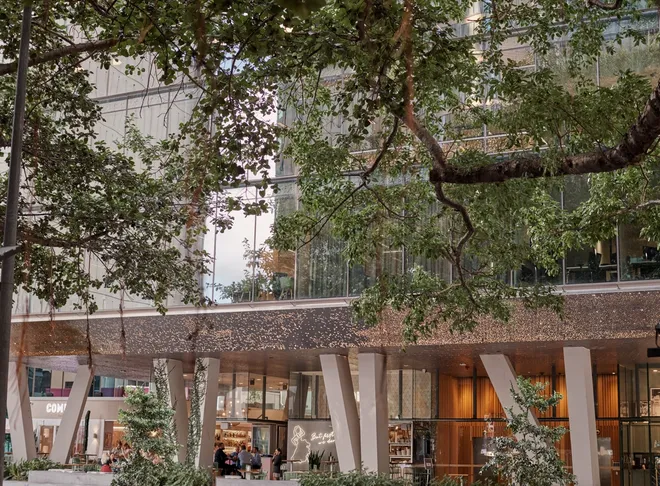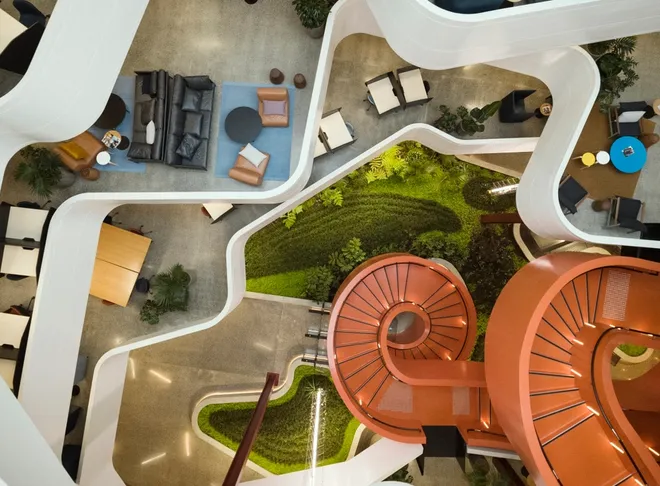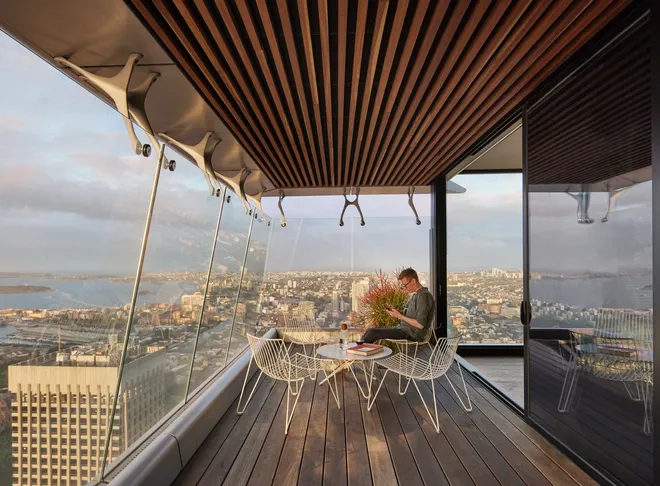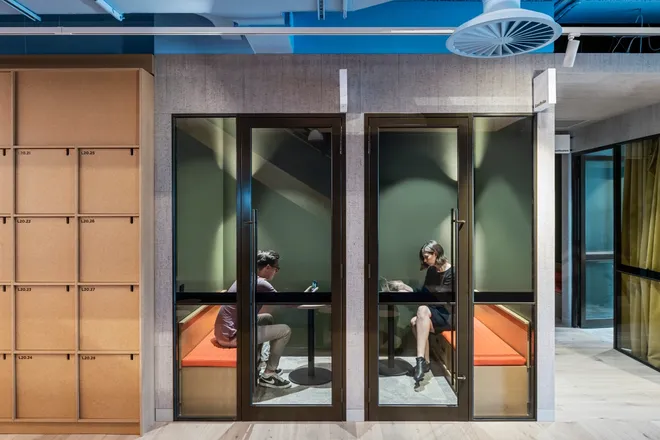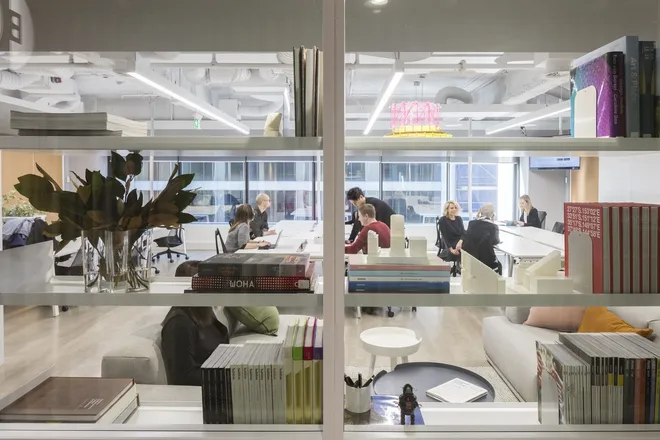Elastic Work

The way we work is being challenged. Recent times have accelerated a move towards a new elastic model for office work that continually flexes its boundaries, physically, culturally and operationally.
It is yet to be determined how far we will shift from the 20th century industrial model of working and where work will snap back to. Regardless of how extreme the shift is, this fundamental change to how we work requires us to evolve our expectations of the workplace, our landlords and our cities.

Left: 550 Bourke Street; Right: Queen & Collins
(Photos by Tom Ross)

Most organisations and landlords believe if they nurture their patch they will prosper. But, hybrid work is likely to persist beyond the pandemic and this requires those that wish to occupy the traditional Central Business District to develop a new synergistic relationship with the city.
The term Central Business District (CBD) was coined in the early twentieth century. The basis of the CBD is a concentration of commercial activity that propels the economy. Most cities rely on this workforce to fuel the city. In many cases this has created a monoculture, high rents and pushed out alternative uses. With increasing office vacancy and fewer workers coming into the city, our opportunity now is to bring diversity and creativity back into the centre of our cities, to create a rich, inclusive, affordable and diverse experience economy. Each interested party must see themselves as part of this mission, to create cities that are owned and embraced by locals while also attracting investment and talent.
Organisations are now competing fiercely to attract and keep the best people and they are looking for innovative ways to gain a competitive edge. Some of the previous attractors such as great offices, great culture and access to the top team members are being disrupted. One of the key reasons to bring people physically together now in a work environment is to accelerate innovation, take the friction out of the creative process and strengthen relationships. In order to encourage people to come together an organisation needs to make that commute worthwhile.
If we value innovation and creativity in our people, we need to connect our knowledge and creative economies. This will fuel innovation with creativity every day in our cites, bringing them alive inside buildings, between buildings and in shared public spaces. If our CBD’s can foster diverse creative experiences and activations for multi-generational use and engagement they can become both a commercial and creative powerhouse.

Many organisations are moving to adopt hybrid work practices and through this are reconsidering the value of their workplace. However, despite the fear of contracting tenant footprints, building owners are in a unique position to lure tenants in this market. Landlords have an important role to play in reimagining and rethinking the offering of the workplace.
There is an opportunity to create ecosystems within buildings or across portfolios, forming partners with the city and organisations in the creation of memorable experiences.


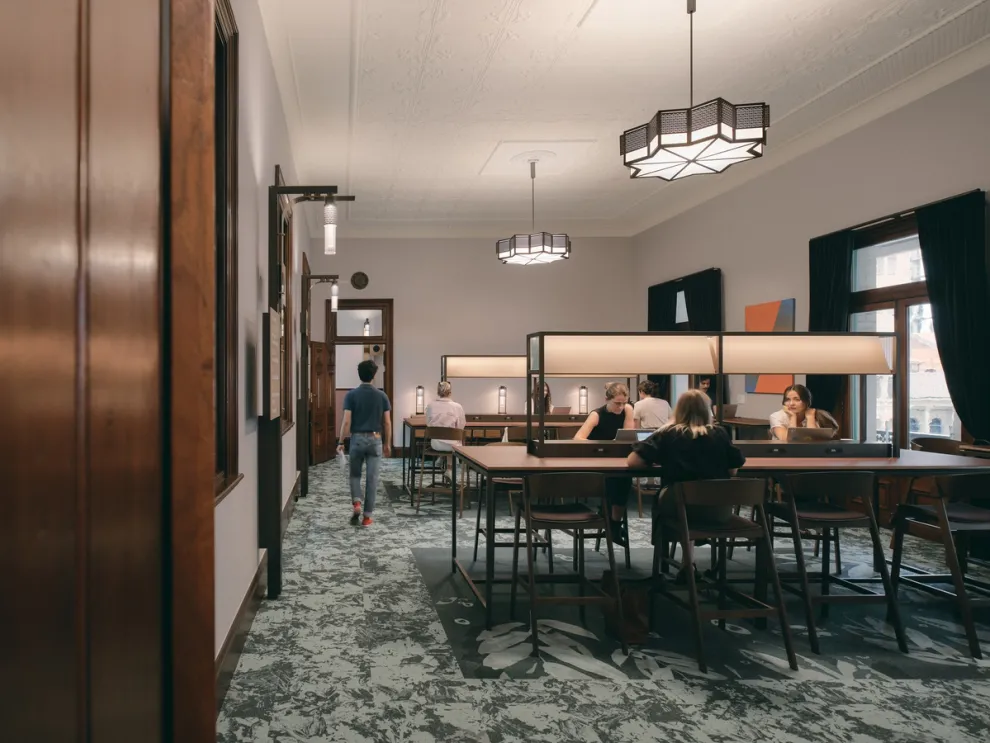
UQ Brisbane City
A new city campus that maximises the connections between UQ and the CBD through user engagement within the rich experiences of the existing heritage building and the modern, flexible tower.
Introducing greater variety including cheaper space to support the creative industries and alternative uses and shared bookable spaces can contribute to the activation of the building and diversity of people. Providing naturally ventilated or roof top spaces can improve wellness and encourage occupants to move around the building. Opening the lower levels of the building to create a stronger connection to the street and public spaces will breathe generosity into the building and sponsor neighbourhood activation. It’s easier to attract people to the ‘place to be’.
The shift comes from thinking about real estate as a static resource to buildings as a service.
We are in a period of experimentation. Organisational culture is being recalibrated. Companies are struggling to predict their future requirements as well as how and where their teams may work. Organisations need to look to new models for leasing that enable them to iterate and adjust how they occupy space.
With an experimental mindset, we can reset the traditional model of large incentives and long leases. Short term flexible leases where the landlord delivers the workplace fitout on behalf of the tenant should now be on offer. In this model the landlord can provide quality design solutions that are part of their service reducing landfill waste from discarded tenant fitouts. The workplace can now be supported by intelligent systems delivered by the landlord, unlocking some of the existing barriers to smart buildings.
When we think about the future of work, most think of the organisation, the building and the city as separate. If we can throw out the traditional property playbook and consider how we create mutually beneficial solutions, we have the chance for all to thrive.
